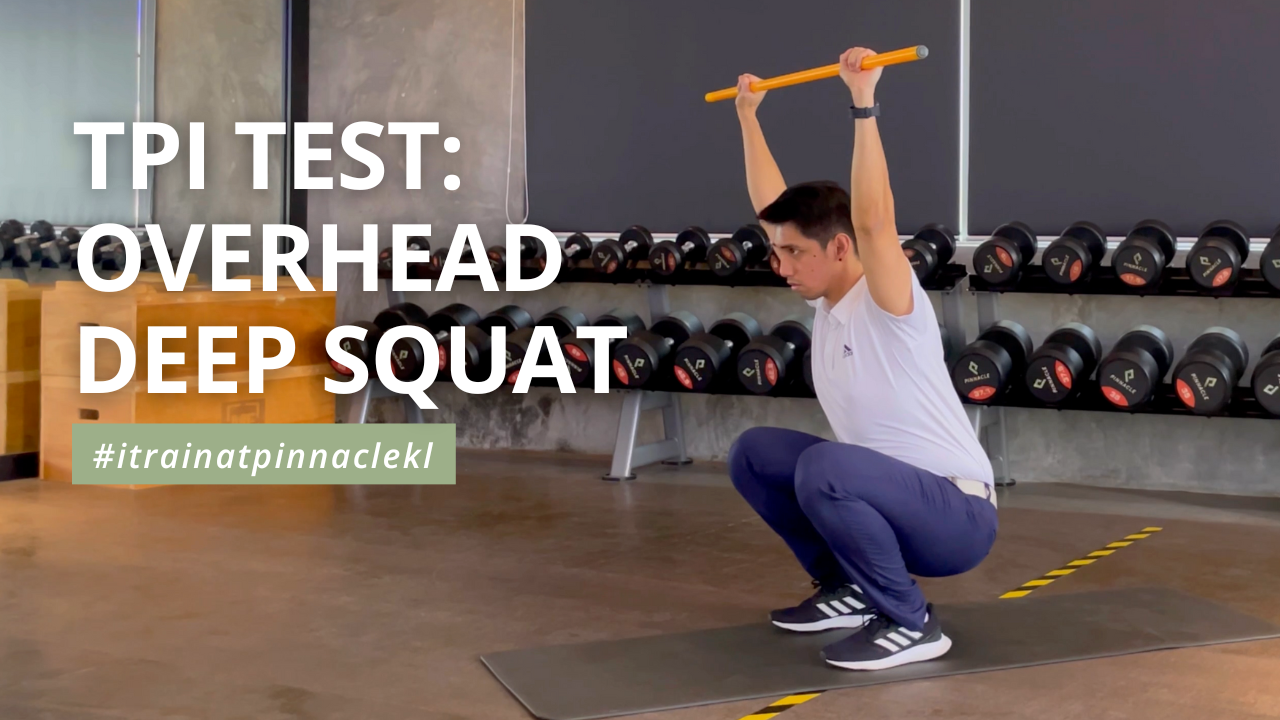Our Articles
TPI Physical Screen - Bridge with Leg Extension Test
The objective of the Bridge with Leg Extension Test is to measure control and stability in the Pelvis/Lumbar Spine/Core. The main muscles involved in this test are the butt muscles (Gluteal), which play the biggest role in stability and power production in the swing.
TPI Physical Screen - Seated Trunk Rotation Test
The objective of the Seated Trunk Rotation Test is to measure the rotational mobility of the thoraco-lumbar spine. This test shows if the golfer has enough mobility to maintain proper upper body posture and stability during the swing.
TPI Physical Screen - Wrist Pronation and Supination Test
The objective of the Wrist Pronation and Supination Test is to measure if your wrists can perform the turning motion with the palms facing up (Supination) and down (Pronation) to a sufficient degree.
TPI Physical Screen - Wrist Hinge Test
The objective of the Wrist Hinge Test is to measure if your wrists can perform the hinging motion up and down to a sufficient degree.
TPI Physical Screen - Wrist Flexion Extension
The objective of the Wrist Flexion-Extension Test is to measure if your wrists can perform flexion and extension to a sufficient degree.
Half Kneeling Torso Rotation
The half-kneeling torso rotation helps to target that upper-lower separation which every golfer needs.
TPI Physical Screen - Cervical Rotation Test
The objective of the Cervical Rotation Test is to measure if your cervical spine (the neck area) has sufficient mobility in rotation and flexion. This test mainly targets the top portion of the backswing where your head maintains in position and your chin touches your collarbone.
TPI Physical Screen - Lower Quarter Rotation Test
The objective of the Lower Quarter Rotation Test is to measure how well your lower body rotates with your upper body in relation to the golf swing. This test requires sufficient internal/external rotation of the hip as well as inversion/eversion of both feet.
TPI Physical Screen - Lat Test
The objective of the Lat Test is to measure lat mobility, shoulder range of motion limitations, and restrictions in the scapular region. This test will determine if there is any tightness in the lats. Having sufficient lat mobility can prevent loss of posture during the golf swing as well as allow the golfer to rotate their shoulders with proper control on the backswing and follow-through.
TPI Physical Screen - Single Leg Balance Test
The objective of the Single Leg Balance Test is to measure overall balance. This test will determine if there are any imbalances in ankle mobility or balancing mechanisms, and it also challenges core stability.
TPI Physical Screen - 90/90
The objective of the 90/90 is to test the range of external rotation in one’s shoulder and their ability to maintain upper body stability at the top of the backswing. Having the correct range of motion as a golfer is important as it will affect your capability to achieve an ideal position to start the downswing.
TPI Physical Screen - Toe Touches
The objective of the toe touch is to test mobility in the lower back and hamstrings, plus it can help identify a hip problem versus a lower back/core limitation. Having the correct range of motion as a golfer is important as it will affect your address position and dynamic posture.
TPI Physical Screen - Torso Rotation
The objective of the torso rotation test is to see how well you can separate your upper body from your lower body. The better you can rotate your upper body while maintaining a stable lower body, the better you can properly sequence your backswing and generate a good coil.
TPI Physical Screen - Overhead Deep Squat
The Overhead Deep Squat is one of the most complex tests in the TPI Physical Screen. Research conducted by TPI has shown that if a golfer is unable to complete a full deep squat with their heels on the ground, it is nearly impossible to maintain posture during their downswing.
Phil Mickelson, The PGA Championship & The TPI Connection
Phil Mickelson’s win in the PGA Championship came as a surprise to many in the golfing world. International bookmakers, a notoriously stingy bunch, thought so little of his chances of winning that they were offering odds of up to 300/1 prior to the start of the tournament. However, Phil’s longevity and competitiveness in the sport has been nearly 2 decades in the making.
TPI Physical Screen - Pelvic Rotation
The objective of the pelvic rotation test is to see how well you can separate your lower body from your upper body. The better you can rotate your lower body while maintaining a stable upper body, the better you can properly sequence your downswing.
TPI Physical Screen - Pelvic Tilt
Your ability to move and control the position of the pelvis is vital for optimal power transfer from your lower body to your upper body during your golf swing. Top level players can tilt their pelvis backwards by up to 20 degrees during the downswing, due to the firing of their abdominal muscles.
TPI Physical Screen
A TPI golf screen is a physical assessment of how well your body moves in relation to your golf swing.
The Power of Golf (Testing for Strength)
Strength imperative for a number of reasons. Firstly, strength is needed to generate power. No strength = no power. Secondly, the body needs to be able to withstand the forces generated by the golf swing.
The Power of Golf (Testing for Power)
Ask any golfer if they need more distance and they will nearly always say yes. Achieving this without injuring yourself can be a lot more difficult. Today, if you google how to improve power for golf, you will see everything from swing harder, to activate your core more to lift more weights in the gym.


















